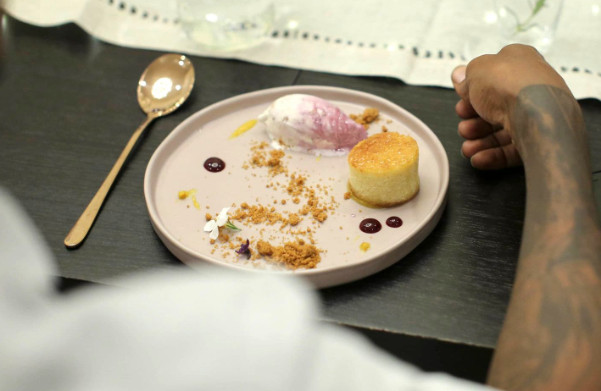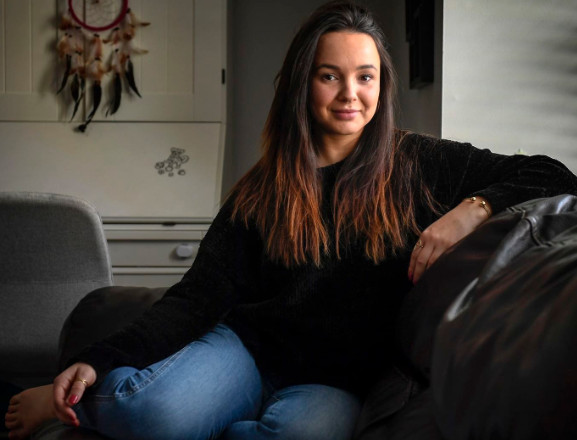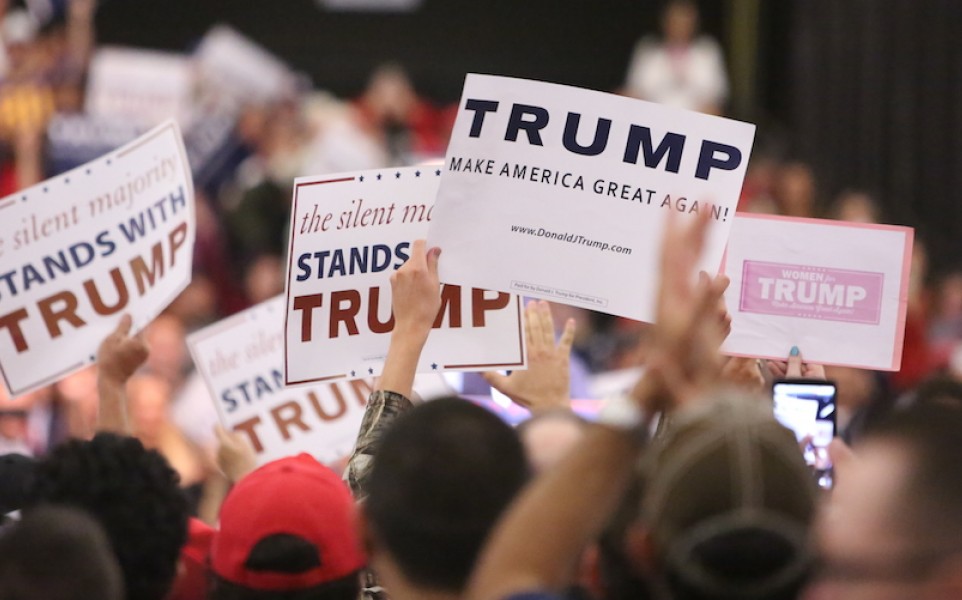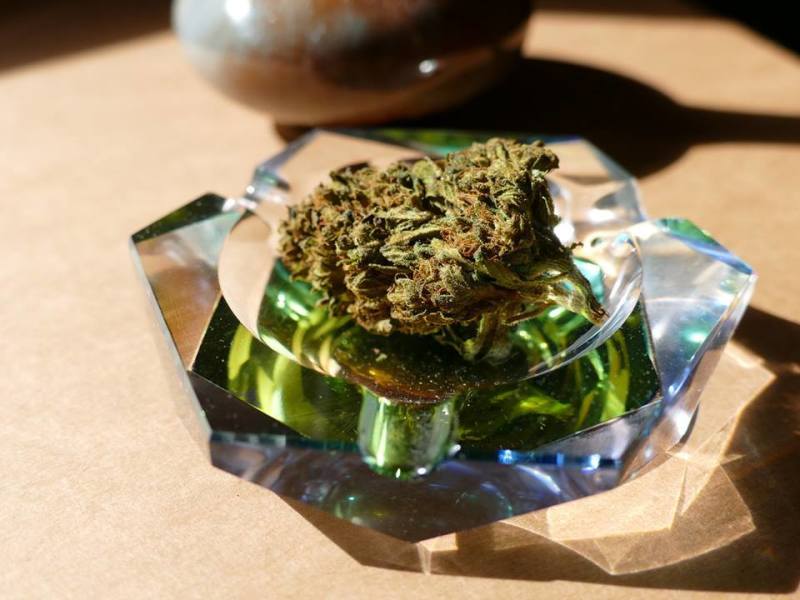Emilia Montalvo tried marijuana in high school like so many others, back when sneaking bong hits behind your parents’ backs was half of its allure.
But she had put it far behind her. She started a family and launched a career as a doula in the Washington area.
Then, three years ago, the District decriminalized marijuana, and suddenly, what had once been illicit seemed ubiquitous, even in her suburb of Springfield, Va. So at 27, Montalvo decided that she’d try pot again — not to get high or rebel, this time, but maybe just to ease the hum of anxiety. She opted for a vape pen, with its discreet, near-scentless oils.
“It’s getting more comfortable for me as I go out and see more people doing it,” she says. “I don’t feel like I’m doing something wrong or illegal.”
A nationwide legalization movement is chipping away at old stigmas — last month, Massachusetts opened the floodgates to recreational marijuana sales, joining California, Nevada, Colorado, Oregon and Washington state, with the District perhaps headed the same way. And suddenly, the kind of people who had never tried pot or, like Montalvo, hadn’t touched the stuff in a decade or more, are lining up to try it, even well into adulthood.
The ranks of marijuana users are growing among all adults, but particularly those who are settling into their child-raising, 401(k)-contributing years. The National Survey on Drug Use and Health found that in 2017, the number of people older than 26 occasionally using marijuana had grown by 3.2 million in three years.
“We see stay-at-home moms, lawyers, chefs, construction workers and baby boomers,” says Case Van Dorne, a co-founder of the Oregon dispensary chain Five Zero Trees.
And as with every other yuppie craze, an industry has grown up to support it, with crafty appeal to upscale and middle-aged tastes. There are gourmet “infused” dinners, dispensaries with the sleek aesthetic of an Apple store, and artisanal treats (Mints! Chocolate truffles!) that look as if they were bound for the shelves of Whole Foods.
Even as thousands of people languish in prison or carry arrest records for marijuana-related crimes, pot has suddenly been defanged and demystified for a risk-averse and well-heeled new clientele. It was oddly symbolic that in Northampton, Mass., it was David Narkewicz — a 52-year-old Air Force veteran and the city mayor — who bought the state’s first legal recreational pot. As the cameras furiously clicked, Narkewicz, in suit and tie, ponied up the cash for a chocolate bar spiked with THC, pot’s psychoactive compound. “Can I get a receipt?” he whispered. Old pals emailed him that they saw the news, he says, and found themselves a little curious: I hope you saved some chocolate to share with your friends.
It was clear something was afoot with the typical marijuana customer when vaporizers packaged like iPhones in gleaming gold hit the market, and MedMen, a marijuana-dispensing chain claiming the mantle of “the Barneys of weed,” opened this spring on New York’s Fifth Avenue. One San Francisco dispensary resembles a swank hotel bar.
“If you can walk down to a nice retail storefront, and you’ve got really clever marketing and packaging . . . there’s some allure to that,” says Ryan Vandrey, a cannabis expert in the Behavioral Pharmacology Research Unit at Johns Hopkins University School of Medicine.
A survey this summer of 5,000 marijuana users in legal states by cannabis market-research firm Brightfield Group found that nearly 20 percent had taken it up only in the past two years. More than 60 percent of those new users were women.
The industry is doing its best to welcome newbies by churning out appealing new ways to get high, says Bethany Gomez, Brightfield’s research director — chocolates with just enough THC to help a weary soul get some sleep, elegant salves to rub onto aching backs, lip balms that soften not only pouts but also life’s hard edges. Whoopi Goldberg is marketing her own line of laced balms and soaks, aimed at PMS sufferers.
Gomez says that products such as these are on a fast track to becoming acceptable to use socially. “They can just swap [them] out for their glass of wine at night.” (Without the hangover or the calories, which is part of their appeal.)
“I only smoke a little bit,” Montalvo says. “I just take one hit, and I’ll be good for like six hours.”
A cannabis-infused mint or two is all one 30-year-old tech worker from New York says he needs, too, and he typically only indulges once every couple of weeks. “It’s much less about stoner culture than an alternative to drinking on, like, a weekday,” says the millennial, who first tried pot a couple of years ago and doesn’t want to be named because marijuana is not legal where he lives.
“I’d always associated it with people I really, really didn’t want to be like: people who weren’t doing well in school.” But then all his grown-up friends picked it up. “The people around me that were doing it were really normal people. They . . . had jobs and were doing really well. It wasn’t a big part of their lives, it was a recreational thing — the same way I treat alcohol.”
We’ve come a long way since Bill Clinton held a joint to his lips and absolutely did not inhale. Boomers make up a large slice of the industry’s newer clientele: At least 20 percent of new recreational users were older than 55.
“You get people who come and they’re like, ‘I’m from Idaho, I’m with my wife, and I just want to check it out,’ ” says Jesse Henry, executive director of Barbary Coast, a San Francisco dispensary that has its own handsomely appointed “smoking lounge.”
“There’s the soccer mom,” Henry says — using what has become an industry-standard cliche for the new-era marijuana user — “a person who has a very active and busy life. She doesn’t want to smell like smoke.”
He might as well be describing Susana Sanchez-Young, a Northern California-based art director and entrepreneur who insisted for years that she’d never touch drugs. “The DARE program worked on me!” she recalls, laughing.

Credit: washingtonpost.com
But a knee injury that kept her from her dancing changed her mind. When a merchant at a San Francisco market suggested a cannabis-laced “muscle-relaxing oil,” Sanchez-Young relented. She was glad she didn’t have to smoke it.
“I put it on that night, and let me tell you . . .” Sanchez-Young, who once worked for The Washington Post, marvels. “I was like, I’m going to need to buy this in, like, Costco bulk. . . . I use it on my neck. I use it behind my ears. Now, if it smells like marijuana, I tell people it’s me.”
The learning curve for new users is daunting. Selling to them, Henry says, often means explaining the difference between the sativa strains — the energizing, head-clearing Red Bull of pot — and the chill, soporific indicas, famed for putting their fans “in da couch.”
At one D.C. shop that operates in a gray area of legality — while recreational marijuana is legal to use in the District, it can’t be bought or sold — the options include infused cereal treats, oils for vaping, grams of green nuggets of “flower” and candies in various strains.
Some know instantly what they want. Others, not so much. Outside, one 60-year-old man was confused. “I don’t know what questions to answer. I don’t know strains. They say, ‘Are you going to go to work with it?’ I just say, ‘Do you have anything that’s good?’ ”
The newbies have also created a demand for lower-dose products that may pack less wallop than a Miller Lite. In some states, five or 10 milligrams of THC is all that’s allowed in an edible; but now, Van Dorne says, they’re coming onto the market with just one milligram, for “microdosing” — a trend in which no one gets high but everyone claims to feel balanced.
In Washington, an intimate group of weed-curious diners supped last month on short ribs plated with marijuana-infused parsnip puree and rum cake dotted with CBD-laced blackberry and jackfruit, both part of a four-course meal cooked by a local chef whom they’d connected with via Instagram. Many of the diners “weren’t regular cannabis users at all,” says the evening’s chef, who didn’t want to be named because of the dubious legality.
“I think they’re less reluctant to try edibles,” she says of the newbies. “They’re like, ‘I don’t want to smoke anything.’ ” But a gourmet meal avoids the smell and the smoke, plus it feels upscale. “It’s easier for them to wrap their head around,” she says.
But maybe it’s also going to their heads.
States where marijuana has been legalized have reported slight increases in pot-related DUIs and calls to poison control — most involving people who simply got uncomfortably high. Vandrey, the Johns Hopkins researcher, thinks everyone needs to proceed more carefully. We’ve understated the likelihood of addiction, he says, and we don’t truly understand dosing. Edibles and oils might look awfully attractive to new users, but what do we really know about how they’re made?
“Over time, does cannabis start to replace alcohol as the drug of choice for the middle-class, middle-aged person to use on the weekends?” he wonders. “But what’s the impact of that? We don’t know.”
Credit: washingtonpost.com











